Aloe liliputana
Aloe liliputana Van Jaarsv. & Harrower
Family: Asphodelaceae
Common names: Luphutana aloe (Eng.), Luphutana-aalwyn (Afr.)
Introduction
Aloe liliputana is the world’s smallest aloe, barely 130 mm tall when in flower, with thin, wiry leaves spreading from a central rosette, and small green-tipped pale pink flowers in small heads in summer. It grows on shallow sandstone bedrock among grass in coastal Pondoland, Eastern Cape, and is very difficult to spot in its sunny grassland habitat, even when in flower. Easily propagated from seed.
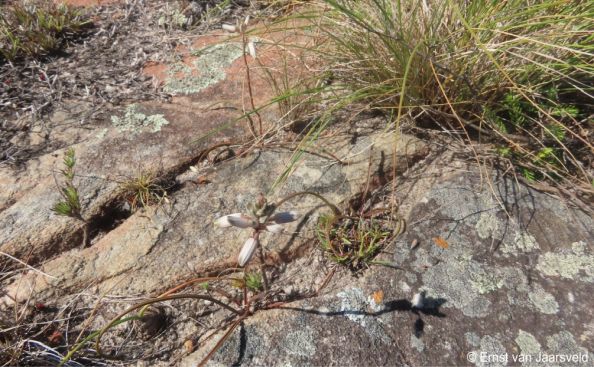
Fig. 1. Close-up of two flowering plants of Aloe liliputana growing on shallow soil in its natural habitat near Luphutana, Eastern Cape.
Description
Description
The plant is a perennial, dwarf, stemless succulent with leaves in a rosette. The rosette hardly 10 mm high but when in flower it is up to 130 mm tall. It is usually solitary but sometimes proliferates from the base forming small clusters. The roots are fleshy, brittle, whitish brown, narrowing at both ends (fusiform), 20–180 mm long, 1.5 mm in diameter at base, widening to 4–6.7 mm in the centre. The leaves are succulent, thin and wiry, the base clasping, at first ascending spreading, becoming more or less prostrate, 3–9 per plant. The leaves linear, 80–190 mm long and 1.7–2.5 mm wide, somewhat recurved, almost rounded (subterete), and channelled during the dry season, smooth, dark green to purplish green, especially towards the base, with small faint oval white spots on the lower surface, prominent and larger in the lower one third of the leaf. The lower side convex, the upper side flat during the rainy season; margin armed with minute teeth (denticulate), especially in the lower three quarters. The teeth are white, cartilaginous 0.3 x 0.2 mm, 1.5mm apart. The leaf tip (apex) is drawn to a sharp point (acuminate).
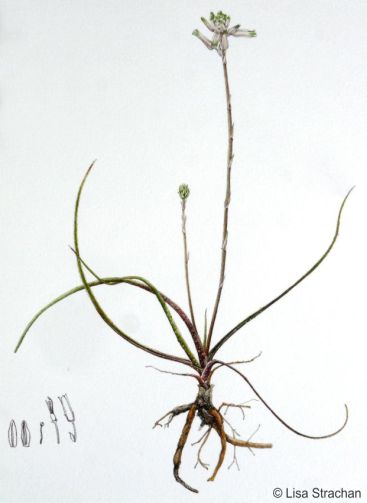
Fig. 2. An illustration of Aloe liliputana by Lisa Strachan, the type plant originally collected by Adam Harrower in Pondoland.
The inflorescence is simple, ascending to reclining (decumbent), 100–145 mm up to 180 mm tall; peduncle wiry 97–130 mm long, 1–2 mm broad and slightly flattened at base, biconvex, with 4–6 spirally arranged sterile bracts, 8 x 1 mm long and clasping the peduncle at intervals of 10–30 mm. The flowering raceme is short, and the flowers in a head (capitate) 15 mm long, flowers sub-densely arranged 13–27-flowered, ascending at first becoming horizontally spreading. The floral bracts are thin, ovate and acuminate. The pedicles 7–9 mm long, ascending. The flower (perianth) is cylindrical, angular and trigonous at the apex, whitish pink, greenish at the tip, 8–11 mm long and the base with a short stipe (stipitate). The flower segments free to base, the outer three, 8 x 2.5 mm, lorate-ovate and channelled, the inner three, 9 x 3 mm, lorate-obovate. The stamens yellowish, 6–7 mm long. Ovary linear ovate, 2.5 x 1.5 mm, grooved, brownish green; style 4 mm long. Flowering time is mainly in late summer (February to March).
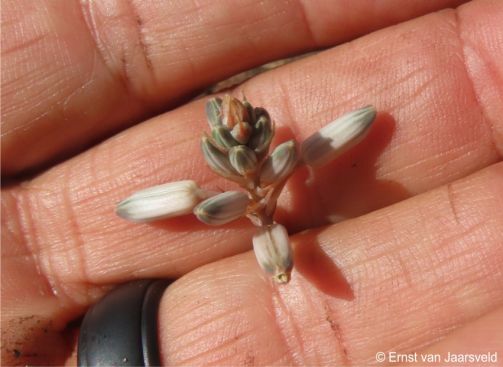
Fig. 3. Close up of a flowering raceme in its native habitat, note the small pale pink flowers.
Conservation Status
Status
Although this is a small overlooked aloe, known only from a small area near Luphutana in southern Pondoland in the Eastern Cape, it is locally common in its habitat. A collection by Simon Woodley about 60 km to the north of the type locality predicts is occurrence in-between. Also the plant has been observed several times, since its discovery at more sites thanks to the keen eye of Andy Forbes-Harding. It is assessed as Vulnerable in the Red List of South African Plants, due to the fact the region is heavily grazed and experiences frequent fires. However plants are co-adapted to grazing, and fire is a natural driving force in the local grasslands but the species may be affected by increases in grazing pressure and fire frequency and intensity.
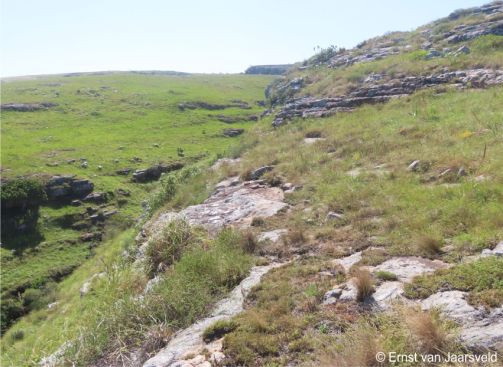
Fig. 4 The habitat of Aloe liliputana, the smallest aloe in the world. It grows on shallow soil on bedrock of mineral-poor quarzitic sandstone soil in coastal grassland near Luphutana in Pondoland, Eastern Cape.
Distribution and habitat
Distribution description
Aloe liliputana is known only from the shallow quartzitic sandstone bedrock (Natal Group, Cape Supergroup) along the coastal grassy plains in Pondoland. It grows about 2.7 km inland at an altitude of 150–200 m. Plants are solitary, scattered and well camouflaged among grasses, lichens, geophytes and succulents. Rainfall in this region is about 900–1 350 mm per annum, and is experienced mainly in summer. The vegetation of the region includes Pondoland-Ugu Sandstone Coastal Sourveld and Scarp Forest in the adjacent protected kloofs. Aloe liliputana grows in the Pondoland centre of plant endemism and was found in association with other succulents such as Aeollanthus parvifolius, Crassula ericoides, Merwilla plumbea subsp. kraussii, Eriospermum cooperi var. natalense, Senecio oxyriifolius subsp. oxyriifolius (= S. orbicularis), Euphorbia flanaganii (=E. woodii), Crassula natalensis and Cyanotis speciosa. Other aloes, growing close by along the coast include Aloe arborescens, A. linearifolia and A. maculata. The dwarf sedge Cyperus rupestris is often associated with the habitat and Aloe liliputana plants. Since the discovery of Aloe liliputana in 2011, the plant was found in a few more sites in by Andy Forbes-Harding in Pondoland as well by Simon Woodley near Xolobeni in similar habitat and about 60 km to the north in theEastern Cape.
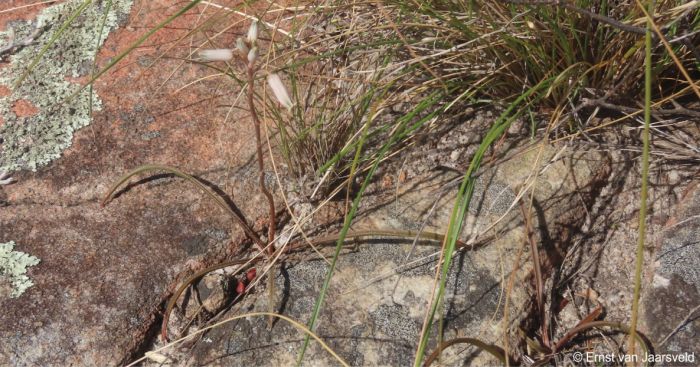
Fig. 5. Aloe liliputana growing in a shallow sandstone crevice in its natural habitat near Luphutana, Eastern Cape.
Derivation of name and historical aspects
History
Aloe lilliputana was named by Adam Harrower and the author and in the British succulent magazine Bradleya in 2014. The species name liliputana pertains to its diminutive size and being the smallest aloe in South Africa and the world. It was discovered by Adam Harrower on an expedition to Pondoland with the author. Adam Harrower was photographing a small succulent growing in shallow bedrock when his eye caught a wiry succulent leaf of an aloe and upon investigation he discovered the small rosette. Adam collected two plants, and from hand pollination he has grown many more from seed.
There are 34 South African grass aloes, usually occurring in sunny grassland. They are divided into two groups, the Graminialoe and Leptoaloe, of which 8 taxa have yellow flowers, the others mainly white or pink and orange flowers. The section Graminialoe consists of 8 species of Aloe indigenous to South Africa. In common are their fusiform roots, narrow linear leaves, simple inflorescence and capitate to conic-capitate racemes and bilabiate to trigonous flowers (mostly white to pink flowered) that are pollinated by insects. These include Aloe albida, A. saundersiae, A. modesta, A. inconspicua, A. minima, A. parviflora and A. myriacantha, all of them confined to grassland vegetation. Of these A. modesta, A. minima, A. saundersiae and A. myriacantha have fairly widespread distributions whilst A. albida, A. parviflora, A. modesta and A. liliputana are only known from a fairly small region. Aloe albida is confined to the Saddleback Mountain south of Barberton (Mpumalanga); Aloe parviflora to a small region near Durban (KwaZulu-Natal); Aloe inconspicua close to Escourt (KwaZulu-Natal) and Aloe liliputana confined to the Pondoland region of the Eastern Cape and southern KwaZulu-Natal. Of these plants Aloe liliputana is certainly the smallest and is immediately distinguished by its very narrow linear leaves of 2 mm in diameter and short floral bracts that are less than half the pedicel length.
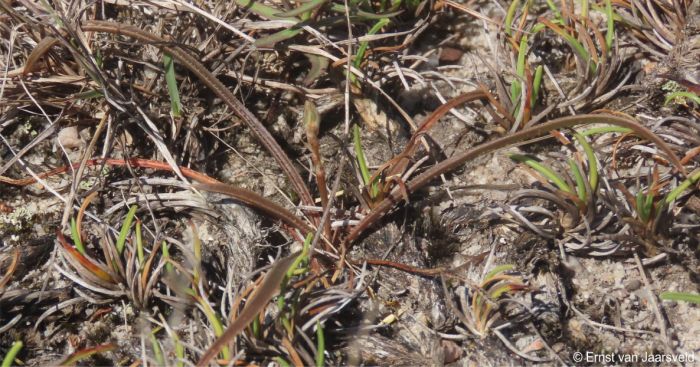
Fig. 6. Close-up of a mature plant of Aloe liliputana growing in habitat among Cyperus rupestris. Note the channelled leaves.
Ecology
Ecology
Aloe liiputana grows in full sun in grassland, where the mineral-poor quarzitic sandstone forms shallow shelves covered by a thin layer of soil. This shallow soil habitat enables the plant to take advantage of the reduced competition from grass roots and other non-succulent plants. The plant survives the dry winters by using the moisture stored in its succulent fusiform roots, succulent leaves and main stem. Its well-camouflaged nature enables the plant to blend into the native vegetation, and in fact when not in flower it is almost impossible to see, thus escaping notice and predation. The local grassland vegetation is grazed by cattle and there is evidence of annual to bi-annual fires during the dry winter months. The firmly rooted plants will not be damaged by grazing and this little dwarf aloe simply re-sprouts after a fire, and is thus well adapted to natural disturbances. The growing season is from spring to autumn, the plant flowers in summer, and is pollinated by insects. The fruiting capsules, as with other aloes, are held in an erect position and when mature open from the top, requiring a gust to wind to disperse the tiny seeds.
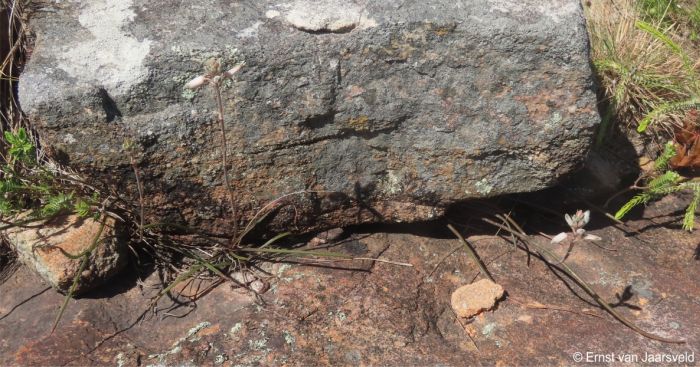
Fig. 7. Two plants growing below a quarzitic sandstone rock in Pondoland, Eastern Cape.
Uses
Use
No mecidinal or cultural uses are recorded, and its ornamental appeal is more as a collector’s item or for miniature gardens.
Growing Aloe liliputana
Grow
Aloe liliputana is occasionally propagated and cultivated and is best grown in a small container. The soil should be sandy, acidic and mineral-poor. Plants can be fed with diluted organic fertilizer. It can be grown in full sun or dappled shade. In regions where frost is a problem it is best kept in a greenhouse or given the protection of a window sill.
Propagation is from seed or, if the plant proliferates, by division. Sow seed in spring in a shallow tray in a mix of 2 parts sand and 1 part well broken down compost. Keep moist and germination should occur within 3 weeks. Keep seedlings moist until big enough to handle, when they can be planted out into individual containers.
Although plants rarely form clusters, vegetative propagation can be achieved by dividing a such a plant. Root in sand. Best achieved in spring or summer. Keep moist until well rooted.
References
- Craib, C. 2005. Grass aloes in the South African veld. Umdaus Press, Pretoria.
- Germishuizen, G. & Meyer, N.L. (eds) 2003. Plants of southern Africa: an annotated checklist. Strelitzia 14. National Botanical Institute, Pretoria.
- Mtshali, H. & Van Jaarsveld, E.J. 2018. Aloe liliputana Van Jaarsv. & Harrower. National Assessment: Red List of South African Plants. https://redlist.sanbi.org/species.php?species=2206-4049.
- Mucina, L. & Rutherford, M.C. (eds) 2006. The vegetation of South Africa, Lesotho and Swaziland. Strelitzia 19. South African National Biodiversity Institute, Pretoria.
- Reynolds, G.W. 1950. The aloes of South Africa. Trustees of the Aloes of South Africa Book Fund, Johannesburg.
- Van Jaarsveld, E.J. & Harrower, A. 2014. Aloe liliputana, a new grass aloe from Pondoland, Eastern Cape, Republic of South Africa. Bradleya 32:30–35.
- Van Wyk, A.E. & Smith, G.F. 2001. Regions of floristic endemism in South Africa. A review with emphasis on succulents. Umdaus Press, Hatfield, Pretoria
Credits
Ernst van Jaarsveld
Kirstenbosch National Botanical Garden (Retired)
Babylonstoren Farm (Current)
Extraordinary senior lecturer and researcher,
Department of Biodiversity and Conservation, University of the Western Cape
May 2025
Acknowledgements. the author thanks Lisa Strachan for her beautiful illustration, Cornell Beukes, Francois and Andy Forbes-Harding, and Simon and Audrey Woodley for assistance in the field and accommodation during our February 2024 expedition to Pondoland.
Plant Attributes:
Plant Type: Succulent
SA Distribution: Eastern Cape
Soil type: Sandy
Flowering season: Late Summer
PH: Acid
Flower colour: Green, White, Pink
Aspect: Full Sun, Morning Sun (Semi Shade), Afternoon Sun (Semi Shade)
Gardening skill: Challenging
Special Features:
Horticultural zones
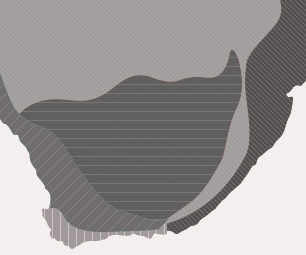






Rate this article
Article well written and informative
Rate this plant
Is this an interesting plant?
Login to add your Comment
Back to topNot registered yet? Click here to register.